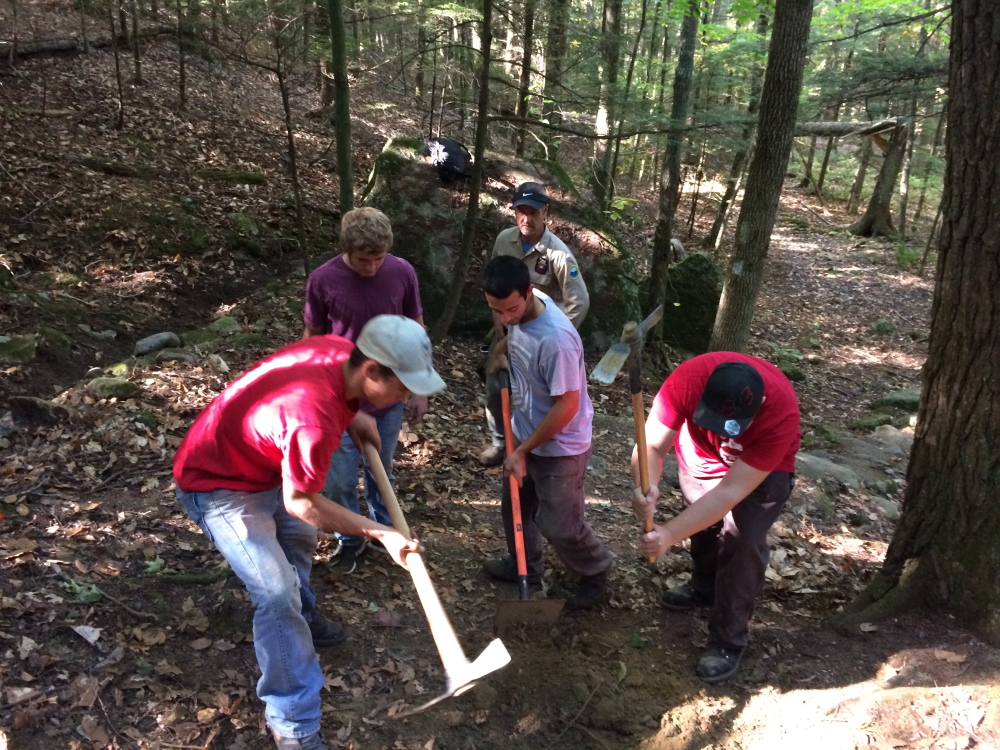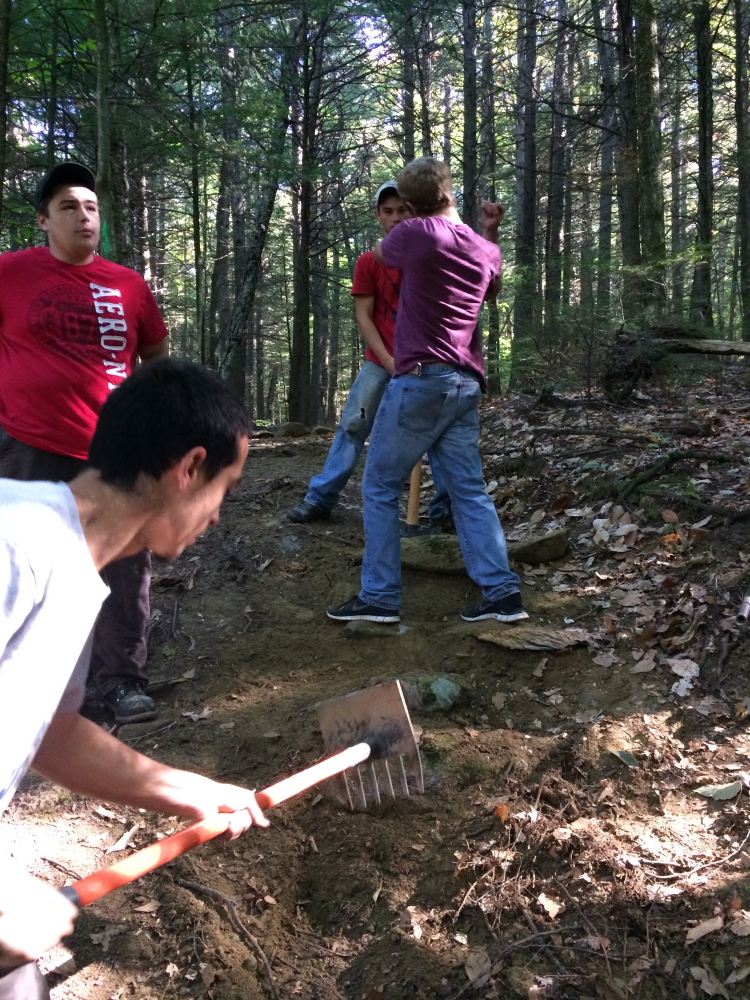SKOWHEGAN — Things were starting to look worn and dangerous on the Pinnacle Trail at Lake George after a rainy spring and a busy summer of hiking on the trail, one of the most popular in the surrounding park.
“It doesn’t have to rain hard for this to turn into a river,” said Derek Ellis, park director, looking toward a section of trail that was barely discernible from the surrounding woods and bramble.
Repairing the trail, a task that Ellis said he would have never had time to get to on his own, was completed in a little more than an hour Friday morning by a group of students from Marti Stevens Learning Center armed with tamples and pulaskis — tools for clearing and re-shaping the trail.
The students cleared leaves and debris from the area, created a rock barrier to divert water flow toward the lake, and dug holes and placed rocks as stepping stones on the trail.
The project was just one part of a larger community service project that the school and others in the area are working on at the Lake George Regional Park, as part of an effort to promote the lake as an educational resource.
“My goal has been to get different schools and organizations involved here,” said Ellis, who took over as director of the park last year. “There’s the community service component, but in many ways it’s also like an outdoor classroom. I think a lot of people, not just students, but a lot of people see the lake as just a place to hang out in the summer, but it’s also a place to make connections in the community and learn skills that they can use down the road.”
The partnership with Marti Stevens was developed last spring and is scheduled to last eight weeks. Between 10 and 20 students visit the lake every Friday, spending about an hour on different projects.
The school is part of Skowhegan Area High School and focuses on providing alternative methods of education, like a recently launched sustainable agriculture program that began last spring.
On the first day of the program, which doesn’t have an official name yet, the students learned to identify trees in the park by hiking through the woods. Then the following week they put the finishing touches on a new boat landing.
On Friday, students repaired about 30 yards of trail, a small but critical section of the Pinnacle Trail, which leads to a view of Maine’s western mountains and the lake and is one of the park’s most hiked, Ellis said.
The service projects also reinforce classroom lessons, according to the students’ teacher, Josh Harris. For example, Friday’s trail repairs were a lesson in erosion, the removal of rock and soil from the trail caused by water flow and human foot traffic.
By digging holes and placing rocks in the ground, the students were learning how to stop erosion and better preserve the trail, which in turn keeps pedestrians from trampling the surrounding land, said Ellis.
Back in the classroom, the students will also make tree identification markers that they will install in the park later this fall based on the trees they picked out at the lake.
“What we tried to look at was what are some things they can do that are hands on, that they don’t necessarily need a text book for?” said Harris. “It’s also building relationships and connections in the community. My guess is that Derek would write any of these kids a reference for a job.”
Pieces of dirt and roots flew furiously as the students, mostly boys, hacked at the ground to make the holes and lugged giant rocks into place. When they were done, the small section of trail, a former carriage road, fit in perfectly with the sections around it.
“I think it looks halfway decent. That’s what I’m saying,” said A.J. Gariepy, 17.
Rachel Ohm — 612-2368
Twitter: @rachel_ohm
Send questions/comments to the editors.




